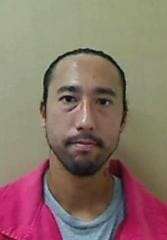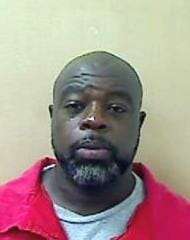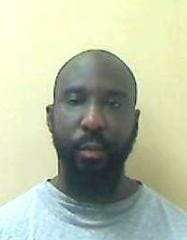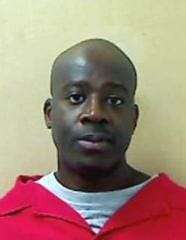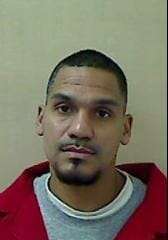
Ryan Garcell was sentenced to death by the State of North Carolina for robbery murder. According to court documents Ryan Garcell would break into the home of Margaret Hutchins Bennick who he would murder during the course of a robbery. Ryan Garcell would be arrested, convicted and sentenced to death
North Carolina Death Row Inmate List
Ryan Garcell 2021 Information
| Offender Number: | 0775602 |
| Inmate Status: | ACTIVE |
| Probation/Parole/Post Release Status: | INACTIVE |
| Gender: | MALE |
| Race: | OTHER |
| Ethnic Group: | HISPANIC/LATINO |
| Birth Date: | 01/22/1986 |
| Age: | 35 |
| Current Location: | CENTRAL PRISON |
Ryan Garcell More News
In June 2004 defendant and his girlfriend, Kaylee Proctor, resided in a mobile home belonging to defendant’s half sister and her boyfriend in Rutherford County. Proctor was pregnant with defendant’s child. Neither defendant nor Proctor was gainfully employed, and the couple were in need of cash. Proctor initiated discussions with defendant about robbing Mrs. Bennick, who resided several miles from them on Old Caroleen Road. Mrs. Bennick had lived in Rutherford County all her life and worked part-time at a Goody’s Family Clothing store. Proctor knew Mrs. Bennick from Proctor’s earlier relationship with Mrs. Bennick’s grandson.
The Crimes
Defendant and Proctor agreed to rob Mrs. Bennick. At their residence on 22 June 2004, defendant and Proctor divulged their plan to three of their friends, Jerome, Anthony, and Quntia Davis.1 As defendant described the plan, he pointed a firearm at one of the boys, saying they could go along or stay at the residence “and be dead too.” The three friends felt intimidated into accompanying defendant and Proctor. Shortly before leaving to carry out the robbery, defendant telephoned Mrs. Bennick’s residence to confirm she was at home.2 Defendant stated he would have to kill Mrs. Bennick after robbing her.
Defendant, Proctor, Jerome, Anthony, and Quntia traveled to Mrs. Bennick’s residence in defendant’s vehicle, with Proctor providing directions. When they arrived, defendant made them wear latex gloves that he had brought. Defendant and Proctor went to the side door of the residence. When Mrs. Bennick came to the door, Proctor asked if Mrs. Bennick’s grandson, Proctor’s ex-boyfriend, was at the residence and then asked to use the telephone. Mrs. Bennick welcomed Proctor and defendant into her residence. At first they were pleasant with Mrs. Bennick, but Proctor became upset when Mrs. Bennick stated several times that she did not have any money. Defendant then grabbed the victim and placed his firearm to her head.
Proctor motioned for Jerome, Anthony, and Quntia to leave the vehicle and come inside the residence. Inside, Jerome and Anthony saw the victim lying facedown on the floor in a bedroom at the rear of the residence, and defendant was pointing his firearm at her. Jerome heard the victim begging, “Don’t kill me,” and promising she would not “call the cops” if defendant let her live. Defendant told his victim to be quiet or he would kill her. Defendant and Proctor told Jerome, Anthony, and Quntia to search for valuables. They ransacked the residence and carried groceries, a VCR, a game console, jewelry, a coin collection, and clothes outside to the vehicle. The victim pleaded with defendant to take anything he wanted as long as he did not kill her. Defendant stole the victim’s automated teller machine (ATM) card and retrieved from her checkbook the personal identification number (PIN) required to access the victim’s bank account.
Defendant then asked Proctor what she thought they should do with Mrs. Bennick. Proctor stated, “She can point me out. You are going to have to kill her. They are going to know who I am.” For approximately ten minutes, defendant contemplated what to do while Proctor repeatedly encouraged him to kill the victim. Defendant told Jerome to come to the rear bedroom of the residence and to send Anthony and Quntia to the vehicle. As Anthony was leaving for the vehicle, he heard a gurgling sound coming from the rear bedroom. Jerome held the firearm while defendant sat on his victim’s back and strangled her with his right arm around her neck. Proctor went outside to smoke a cigarette. When his victim ceased struggling or moving at all, defendant retrieved Proctor so she could check the victim’s pulse. Jerome went to wait in the vehicle.
Approximately five minutes later, and after ransacking the residence, defendant and Proctor returned to the vehicle where Jerome, Anthony, and Quntia waited. With a smile on his face, defendant told them how he had “choked” and “killed” his victim and warned that they better not “get cold feet” or they might “end up dead like that woman.” Anthony testified defendant told them how, after strangling the victim, he wrapped an electrical extension cord around her neck and rode her limp body like a horse, saying, “Giddy up, giddy up.” Defendant tied one end of the cord around his victim’s neck and the other end around a bedpost in an attempt to make the murder appear like a suicide.
The group returned to defendant’s residence for a short time and stored some of the stolen items in defendant’s bedroom. They then went to defendant’s mother’s residence and presented her with some of the victim’s jewelry, the coin collection, and the VCR as birthday presents. Defendant’s mother inquired about his activities, and defendant confessed to the murder. Defendant’s mother suggested ways to conceal his identity so he could use the stolen ATM card without being apprehended by law enforcement. The group traveled to various locations that night and the next night and used the ATM card. Before access to the victim’s bank account was blocked on 25 June 2004, $1,790.35 in cash was fraudulently obtained.
The day after the murder, 23 June 2004, the victim’s coworkers called her sister when she failed to arrive for her 5:00 p.m. work shift. Mrs. Bennick’s grandson went to her residence and found it in disarray. He found her body in a rear bedroom of the residence with an electrical extension cord wrapped around her neck and tied to a bedpost.
Law enforcement immediately began an investigation. The crime scene yielded several items of direct and circumstantial evidence. The kitchen and other rooms were ransacked; a latex glove was found on the kitchen counter; latent fingerprint impressions indicated that the perpetrators wore gloves; and an ashtray with cigarette butts laid on the floor next to the victim’s body.
During the last week of June 2004, defendant and his friend, Nate Whiteside, were shopping at a retail store when Nate noticed a newspaper story reporting the murder. Nate knew the victim, so he discussed the story with defendant. Defendant’s reaction seemed unusual, making Nate suspicious. In response to Nate’s persistent questioning, defendant confessed to the murder, described how he committed it, and showed Nate his firearm.
On 2 July 2004, the day after defendant’s confession to him, Nate contacted law enforcement officials who asked him to telephone defendant and speak with him more about the crimes so that the conversation could be recorded. That evening Nate telephoned defendant. Defendant made incriminating statements that were recorded and subsequently admitted into evidence at trial.
Law enforcement received additional information on 2 July 2004. Francia Lopez, defendant’s older half sister with whom defendant and Proctor resided, learned of the victim’s death and suspected defendant and Proctor may have been involved. She remembered their arrival at the residence on the evening of the murder carrying bags of groceries and other items. Several days after the murder, Lopez and Proctor traveled in defendant’s vehicle to a retail store. Lopez asked Proctor if she and defendant were involved in the murder, and eventually, Proctor admitted the details of the crimes. Worried that defendant would harm anyone he suspected of reporting him to law enforcement, Lopez contacted her cousin in Florida who telephoned members of defendant’s and Lopez’s extended family. An out-of-state family member informed law enforcement in North Carolina about the details of Proctor’s conversation with Lopez. Defendant was arrested the next day, 3 July 2004.
After defendant’s arrest, law enforcement received several more pieces of critical evidence. Some of the victim’s jewelry and her VCR were discovered at defendant’s mother’s residence. On 5 July 2004, defendant’s mother gave a statement to law enforcement that included the following:
On Tuesday after they killed that woman they came to my house with the stuff they stole. Ryan had an ATM card he had stolen. Ryan laid a pistol on the table to ask me how he could use the card at a ATM. I told him ․ he couldn’t do it without getting caught․ I told him to cover his face and his body․
Ryan stole three hats from my boyfriend Luis․ Luis recognized the hat from the ATM [photos]․ They left to go to ATM and came back around 2:00 to 3:00 a.m.
․ They had a thousand dollars in a cigarette case․ Ryan gave me $160 and said, “If you know what’s good for you, don’t you say anything.”
During the last week of June 2004, defendant visited a friend, Christopher Jamell Joiner, wearing new clothes and jewelry and carrying a new cell phone. Joiner asked defendant how he acquired the items. Defendant told him, “ Don’t worry about it.” On 2 July 2004, defendant visited Joiner again and gave his firearm to Joiner without explanation. After Joiner learned of defendant’s arrest, he wrapped the firearm in a plastic bag and threw it into a wooded area on 4 July 2004. Joiner also contacted friends and members of the victim’s family to tell them he had possessed the firearm. When requested, Joiner led law enforcement to the weapon on 6 July 2004 and identified the firearm at trial.
On 8 or 9 July 2004, Francia Lopez retrieved her mail, which at the time was being delivered to her mother’s residence. Lopez discovered an envelope addressed to her mother having Rutherford County Jail as the return address. Lopez opened the envelope and found a letter written in defendant’s handwriting to their mother. After reading the letter, Lopez turned it over to law enforcement. In the letter, defendant expressed his love for Proctor and for his unborn child. He told his mother he believed he would receive a sentence of death and Proctor would receive a sentence of life imprisonment. Defendant begged his mother to “take the charge for me,” so that he and Proctor could be free to marry and raise their child. Defendant unfolded a story his mother was to tell law enforcement if she agreed to help him. In doing so, defendant corroborated evidence from the crime scene and corroborated many of the salient facts testified to by the State’s witnesses, including that an “ashtray was right beside” the victim’s body when she was killed and “an extension cord” was used to “tie[ ] her neck to the end of the bed, the post.”
Forensic pathologist Donald Jason, M.D., conducted an autopsy on the victim’s remains for the State Medical Examiner System. The autopsy revealed numerous bruises and abrasions on the victim’s arms, legs, and face. Two sets of ligature grooves were found on the victim’s neck, one in the front and another that went all the way around her neck. The marks around the neck were consistent with the testimony received regarding the electrical extension cord defendant wrapped around the victim’s neck. The cause of death was strangulation due to either the closing of the victim’s airway or the closing of the arteries that carried blood to her brain, or both.
After deliberating on the evidence presented by the State,3 the jury returned guilty verdicts for first-degree murder, robbery with a dangerous weapon, and conspiracy to commit armed robbery. The trial then advanced to the penalty proceeding as required by statute.
